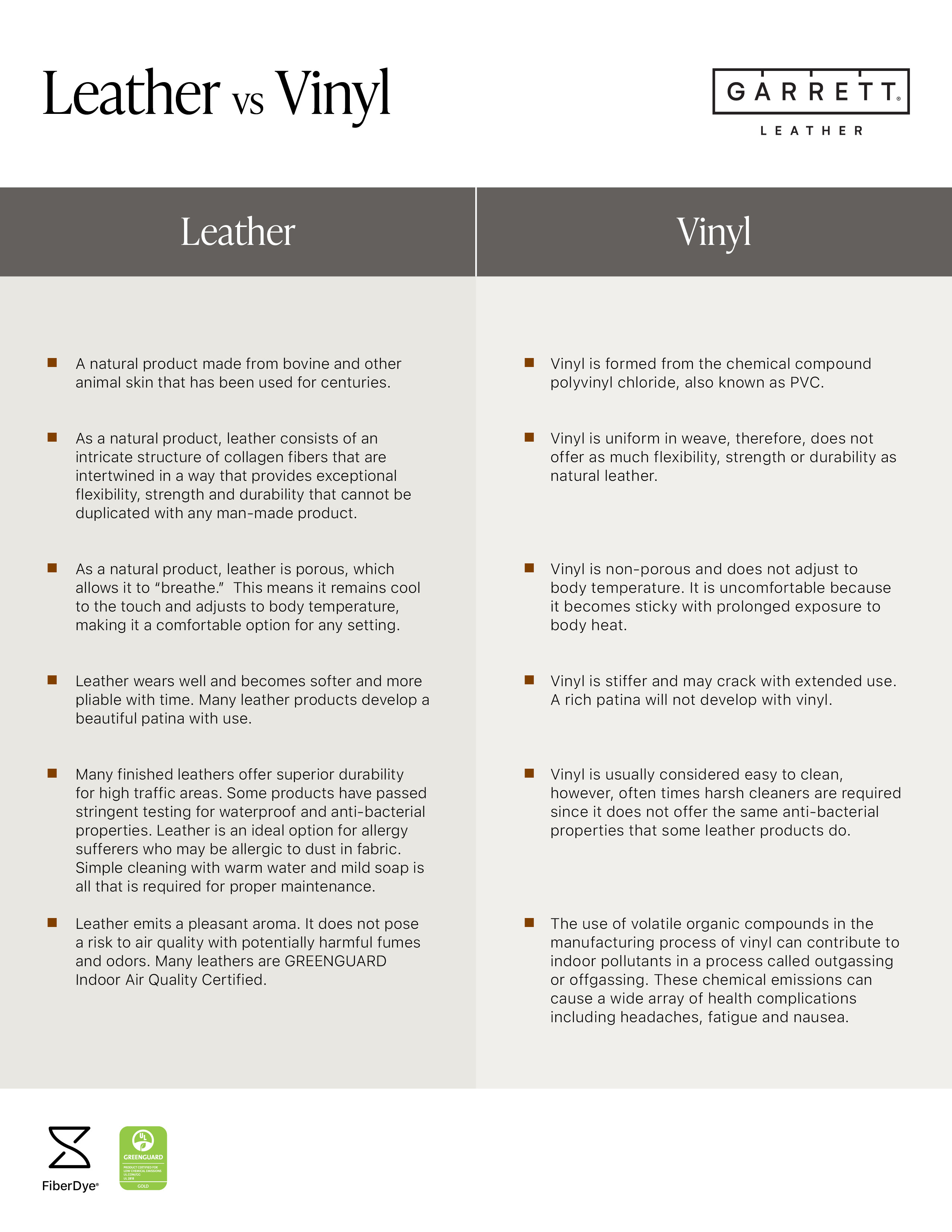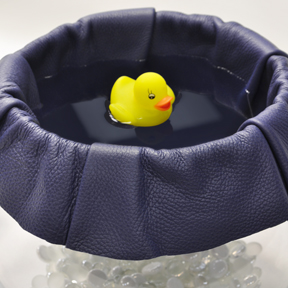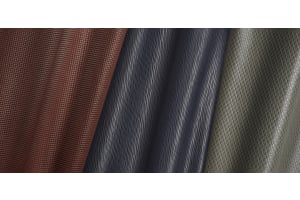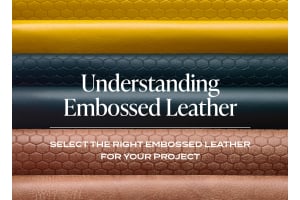Waterproof Leather: A Buyer's Guide
Leather is a beautiful option for areas such as yacht interiors, summer homes, and beach-side resorts. Create beautiful spaces worry-free with waterproof leather. Here are some helpful tips to help you select the best option.
There is no reason to shy away from using leather, especially waterproof leather, for spaces that are subject to the elements. Leather is an excellent textile to use for multiple applications, including outdoor use. While vinyl is a low-cost option, it may not always be the best solution. Below is a side-by-side comparison of leather vs vinyl.

Leather offers superior durability, flexibility, softness, and comfort. Furthermore, leather typically outlasts vinyl and fabrics. Therefore, it is a more cost-effective option in the long run. Now that we've established the benefits of using leather over vinyl, let's discuss water resistance.
Water Resistant vs Waterproof Leather
Leather is a natural, porous material. After tanning, semi-aniline leather receives a protective, water-resistant finish. Semi-aniline leather is water resistant and provides extra protection against spills. The finish provides a barrier against liquid absorption. Semi-aniline leather offers superior durability and does not require any additional treatment. Liquid spills will puddle on top of the surface. Simply blot spills immediately with a dry, clean cloth. If left unattended, over time the spill will eventually seep through the tiny pores of the leather. Most woven fabrics, in comparison, absorb spills immediately upon contact.
Waterproof leather, on the other hand, protects against spills regardless of how long the spill sits on the surface. Torino is waterproof leather that does not require any additional topical treatment or spray. It offers superior durability, flexibility, softness, and comfort compared to faux leather and fabric alternatives. How can we be sure Torino is waterproof? Because we tested it. To demonstrate our waterproof leather, we suspended a piece of Torino leather over a fishbowl and poured water on the surface of the leather. Over the course of three full days, none of the water penetrated the leather. In addition, we sent Torino to laboratories to perform official industry tests to measure its water resistance.

Water on the surface of Torino Regatta
Industry Test Methods for Waterproof Leather
Two industry tests that we used are Dynamic Water Absorption and Water Resistance Hydrostatic Pressure Test. Both of these tests provide quantitative data and gives customers peace-of-mind when seeking true waterproof protection.
First, we used is The Dynamic Water Absorption test. This test measures the amount of liquid that a piece of fabric absorbs when submerged in water. For this test, a piece of Torino leather was cut to a certain size and weighed. Then it was placed in a stainless steel canister with 50 cc of distilled water and tumbled for 40 minutes. The piece of leather was removed from the canister and weighed again. The results showed that the leather absorbed less than 2% of the water. As a point of reference, generally, military glove specifications require leathers tested using this method to have less than 30% water absorption.
Second, we used the Static Column Water Resistance Test. For this test, a column of water is placed on top of the leather. The results indicate the amount of water pressure at which the water begins to seep through the leather. The recorded water pressure is measured in millimeters or centimeters. The higher the rating, the better the water resistance. The results for Torino are 150+ cm. The + means that the result exceeded the capacity of the instrument used.
New Colors
Due to popular demand, we recently added 13 new colors to our Torino waterproof leather collection. Torino has a beautiful pebble grain and anti-bacterial finish. All 30 colors are in-stock for immediate shipment. Request samples today.

Top to bottom: Torino Dandelion, Torino Chelsea Gray, Torino Titanium, and Torino Cornflower








